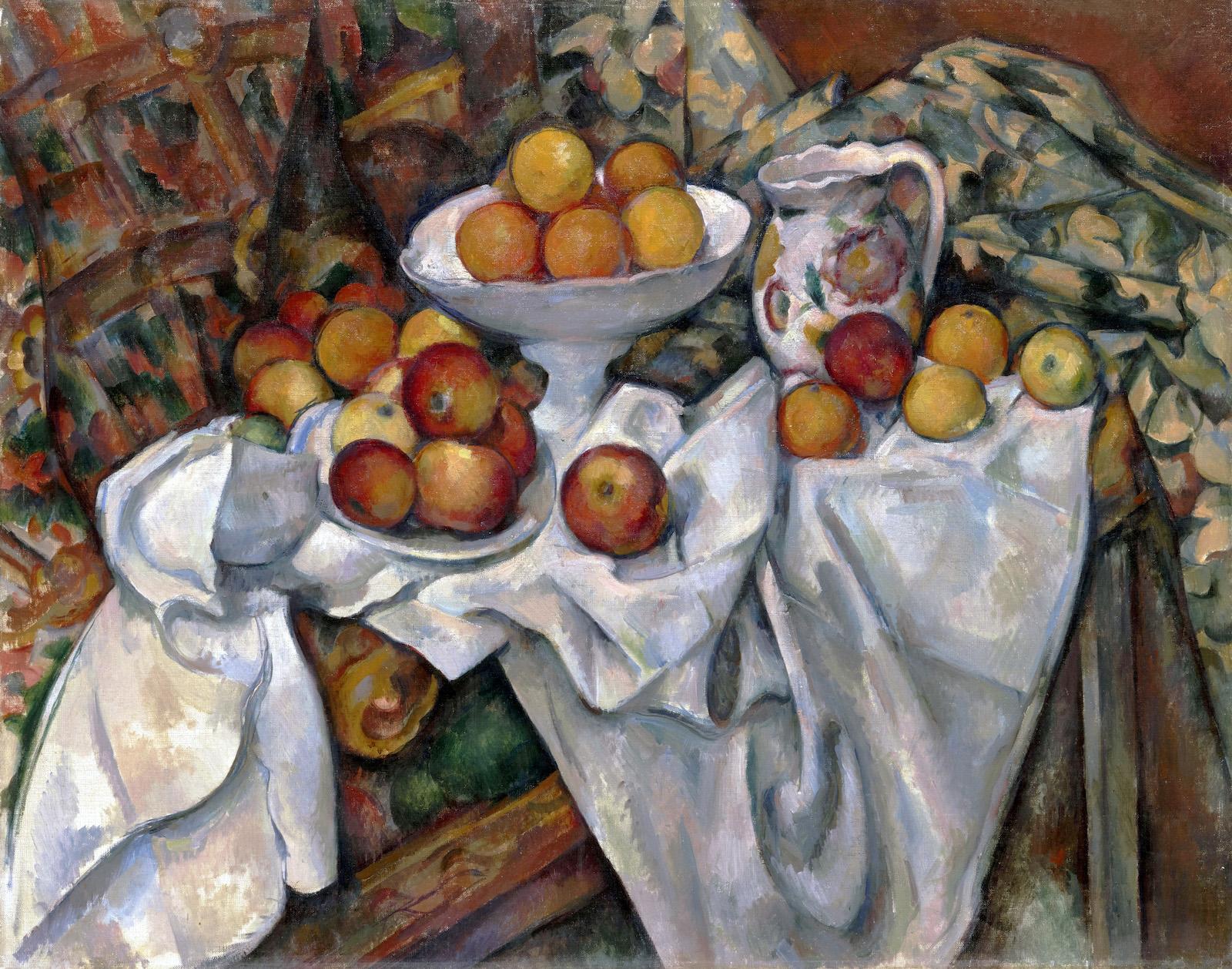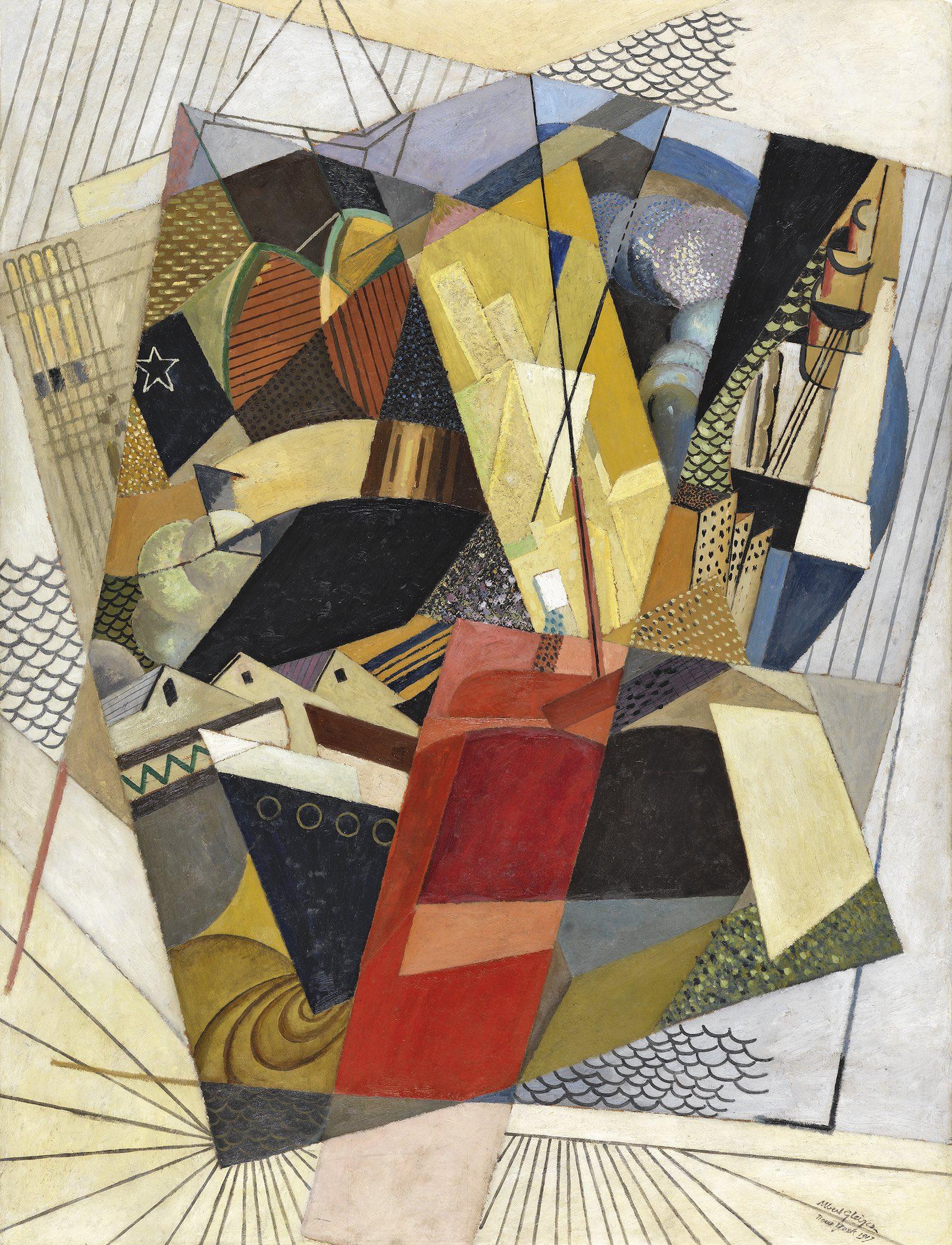Picasso shocked and disturbed critics by simplifying his forms into blocks of color and sharp angles. He offered many different simultaneous perspectives on a flat picture plane. This was an entirely new way of painting, and one that required the viewer to work hard to decipher the canvas.
Around this same time, Georges Braque began paring landscapes down into cube-like shapes. It is almost impossible to read his paintings comfortably; like Picasso, Braque rearranged background and foreground elements, colors, and clues about spatial recession so that we simply cannot read any illusionism in them.
Years before Picasso and Braque’s experiments, Paul Cézanne had tried to use paint to offer new insights into sensory experience. He wanted to capture the passage of time and the vibrations he felt in landscapes via painting. Cézanne’s work would come to be crucial to artists in the following years searching for ways to access subjects’ truths in more holistic ways. These examples make clear that Cubism does not have a single point of origin, but rather several tangential branches that took years to meet, only to veer off again in multiple iterations.
































